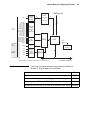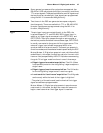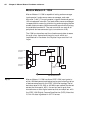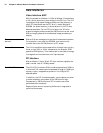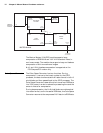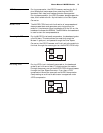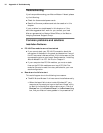
70 Chapter 5: Matrox Meteor-II hardware reference
Data interfaces
Video Interface ASIC
With the exception of Meteor-II /1394, all Meteor-II boards have
a VIA, which acts mainly as a bridge to the PCI bus. The VIA
is capable of high-speed image transfers to Host memory or
other PCI devices across the PCI bus. It uses 4 Mbytes of
SGRAM (on-board memory) to store data until the PCI bus
becomes available. On the PCI form factor, the VIA also
supports image transfers across the VMChannel to one or more
Matrox imaging boards for accelerated image processing or
display.
Simultaneous data
streams
Matrox VIA can manage up to two simultaneous data streams.
For example, it can grab into SGRAM, and concurrently
transfer data over the VMChannel or PCI buses.
General features The VIA is capable of plane separation of image input on two,
three, or four 8-bit or 16-bit components (for example, RGB
packed to RGB planar). This mechanism is also used to merge
line segments of monochrome multi-tap cameras.
PCI interface
Matrox Meteor-II has a 32-bit PCI bus interface, capable of a
peak transfer rate of 132 Mbytes/sec.
The VIA’s PCI interface The VIA’s PCI interface is 32-bits wide and operates at 33 MHz.
It allows all VIA resources to be accessed through a 128-Mbyte
memory region, mappable anywhere in the 4-Gbyte PCI
address space.
In addition, the PCI interface support various plane and pixel
transfer modes by using some of the VMChannel logic.
Consequently, VMChannel and PCI transfers cannot be
performed simultaneously.
Read pre-fetch and write posting buffers are integrated to
optimize Host access.






